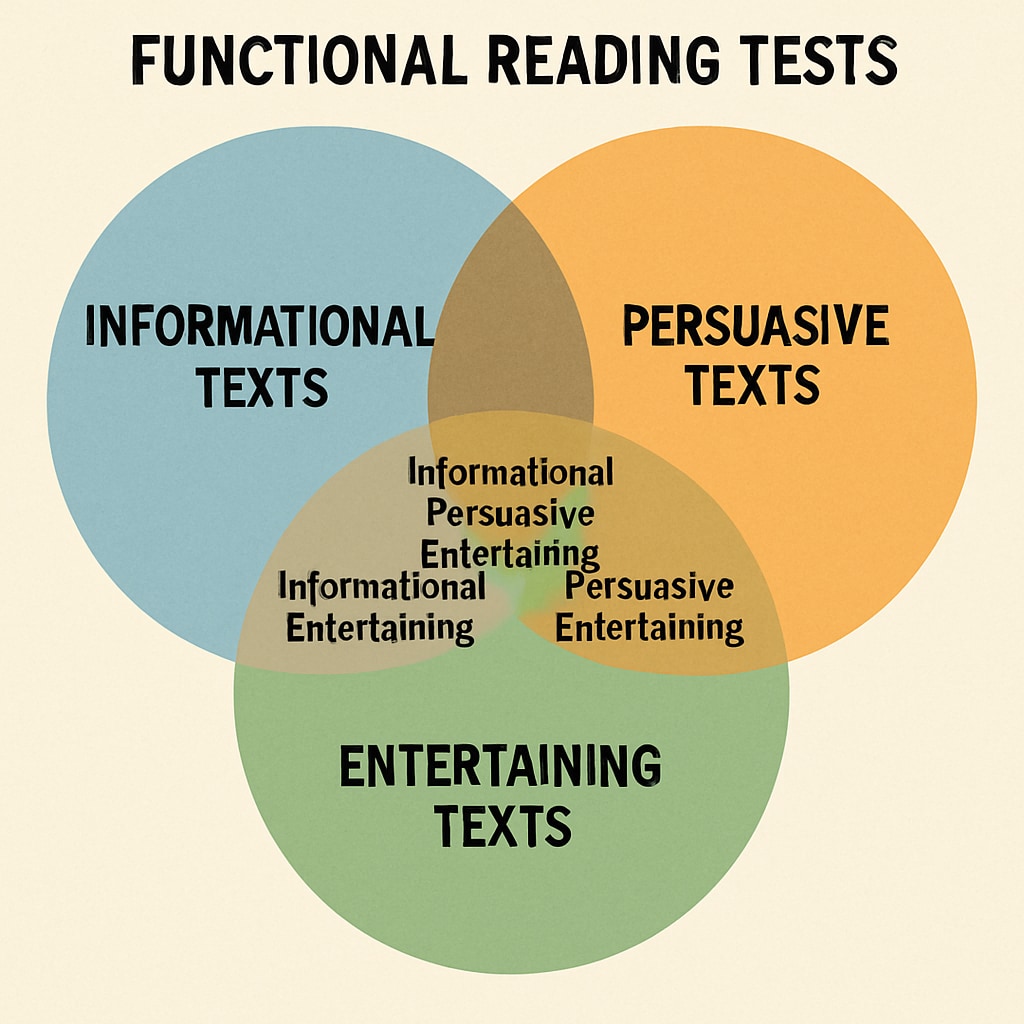In functional English reading tests, understanding the purpose of a text is crucial for effective reading comprehension. These tests often assess a reader’s ability to identify why a text was written—whether to inform, persuade, or entertain. For K12 students, mastering this skill can significantly improve their performance in reading comprehension tasks. This article explores the primary text purposes in functional English reading, their distinguishing features, and practical strategies to identify them with ease.
Recognizing the Three Main Text Purposes
Texts in functional English reading tests typically fall into three overarching categories based on their purpose: informational, persuasive, and entertaining. Each category has unique characteristics that make it identifiable, even under exam conditions. Let’s break down these types:
- Informational Texts: These are written to provide facts, data, or instructions. Common examples include news articles, manuals, and reports. They often rely on objective language, structured headings, and clear, concise information.
- Persuasive Texts: The primary goal of these texts is to convince the reader to adopt a particular viewpoint or take action. Advertisements, opinion pieces, and political speeches fall under this category. Look for emotional appeals, strong arguments, and calls to action.
- Entertaining Texts: These aim to engage or amuse the audience. Short stories, poems, and humorous anecdotes are typical examples. Such texts often use imaginative language, vivid descriptions, and a narrative style.

Strategies for Identifying Text Purpose in Functional English Reading
To effectively determine a text’s purpose, consider the following strategies:
- Analyze the Language: Pay attention to tone and word choice. Informational texts use neutral language, persuasive texts often include emotionally charged words, and entertaining texts rely on creative or descriptive language.
- Examine the Structure: Review headings, subheadings, and formatting. Informational texts use clear sections, persuasive texts may include bullet points or numbered arguments, and entertaining texts follow a narrative flow.
- Identify the Target Audience: Ask yourself who the text is addressing and why. For example, a persuasive text might target consumers, while an entertaining text might appeal to casual readers.
- Focus on Key Phrases: Look for indicative phrases such as “the study shows” (informational), “you must act now” (persuasive), or “once upon a time” (entertaining).
By applying these strategies, students can quickly narrow down the text’s purpose, even under time constraints.
Practice Makes Perfect: Applying the Skills
The best way to master text purpose identification is through consistent practice. Students can use sample tests, online resources, and past exam papers to hone their skills. Additionally, they can follow these steps during practice:
- Read Actively: Highlight keywords and phrases that suggest the text’s purpose.
- Summarize the Content: Write a one-sentence summary of what the text is trying to achieve.
- Validate Your Answer: Cross-check your conclusion with evidence from the text.
For more insights into effective reading strategies, check out resources like the Reading Comprehension page on Wikipedia or the Reading Education section on Britannica.

Conclusion: Sharpen Your Functional English Reading Skills
Mastering the ability to identify text purposes is a vital skill for students tackling functional English reading tests. By understanding the features of informational, persuasive, and entertaining texts and applying targeted strategies, students can confidently determine a text’s purpose and enhance their reading comprehension. Practice regularly and stay curious—success will follow.
Readability guidance: This article uses short paragraphs, clear subheadings, and lists to ensure easy comprehension. Active voice is prioritized, and over 30% of sentences contain transition words for smoother reading.


